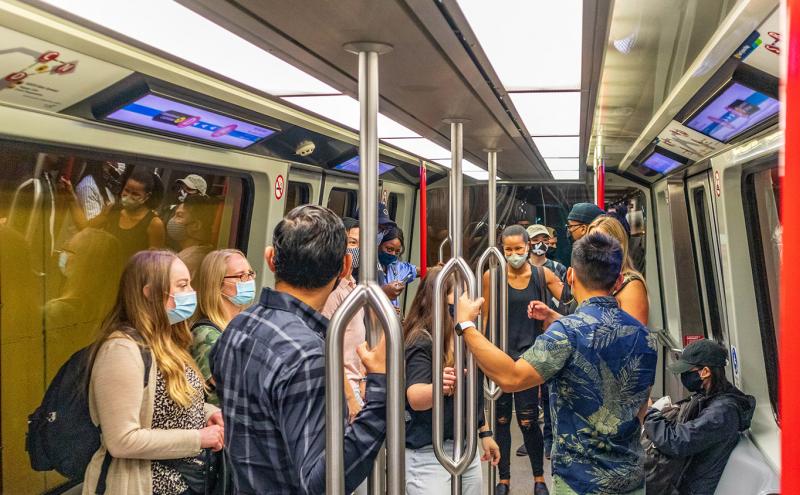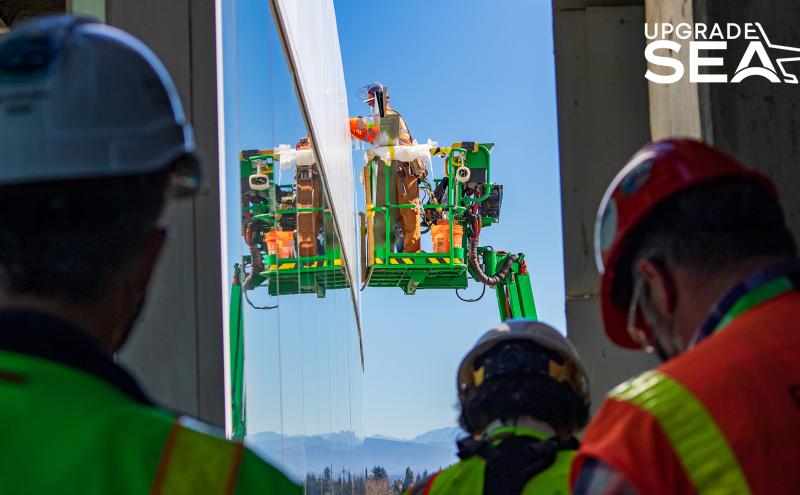It's late in the evening at Seattle-Tacoma International Airport (SEA), and you sleepily shuffle through the terminal to your gate. It's calmer and quieter than the early morning hustle and bustle. Below you in the belly of the airport, out of sight, is where the action is happening! You hear the electrical hum of the 600-volt rails and the whoosh of brakes dispersing energy — the sounds of the SEA Underground.
If you’re one of the nearly 51 million passengers traveling through SEA each year, chances are you’ve gone underground to get to your gate. Around 40% of SEA passengers ride the train system with its 1.7 miles of tunnel below the airport. The SEA Underground can get you across the terminal in a snap and help you access the N and S Concourses which are only accessible by train.
As one of the first airport train systems in the world and the first constructed in the United States, the SEA Underground has helped you navigate SEA Airport for the past 50 years. The last major upgrade was in the early 2000s, which is why a new project (SEA Underground Controls Replacement) is underway.
- Phase 1 includes installing more than two miles of fiber optic cable and replacing lighting in the tunnels, and it's nearly complete
- Phase 2 starts later this summer with an upgrade to the automatic train control systems like computer servers, software, and video
In the meantime, regular behind-the-scenes maintenance keeps the trains in top shape, whisking you to your gate with minimal downtime. Thanks to regular inspections and maintenance, trains are up and running 99.95% of the time, so you don’t miss a beat on your way to your next destination.
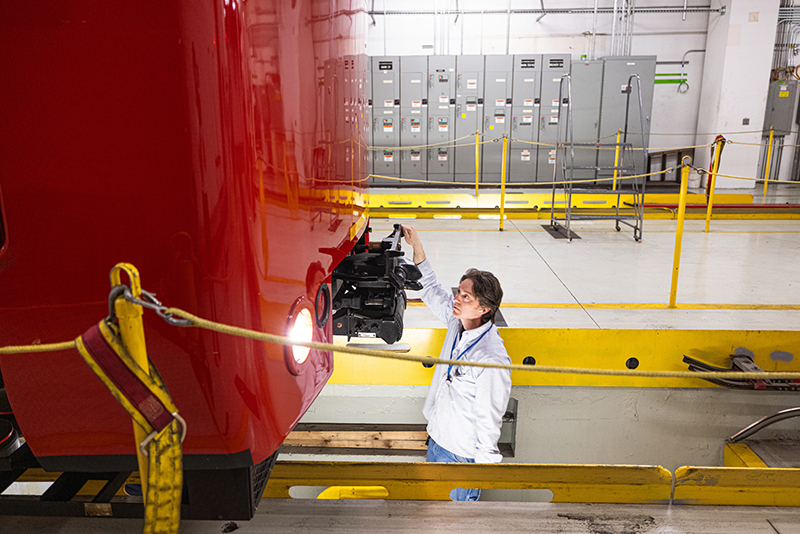
A world beneath your feet
To make sure each train car gets TLC, SEA maintenance staff holds monthly maintenance weekends involving every trade group at the Port. Each trade uses its expertise to inspect each train car and keep them all moving safely and efficiently for passengers.
Want to know what it takes to keep trains up and running? Let's go behind the scenes for a peek at how it all happens.
Maintenance weekend kicks off at around 10:00 p.m. on Friday as train cars are shuffled in and out of the South Train Loop, North Train Loop, and the shuttle train between A and D stations to begin maintenance work. Work lasts through Sunday at 4:00 a.m. once all the inspections have been completed. Staff inspects the 21 cars one by one, using a process that does not require any service interruption. All work happens behind the scenes while you're riding the rails.
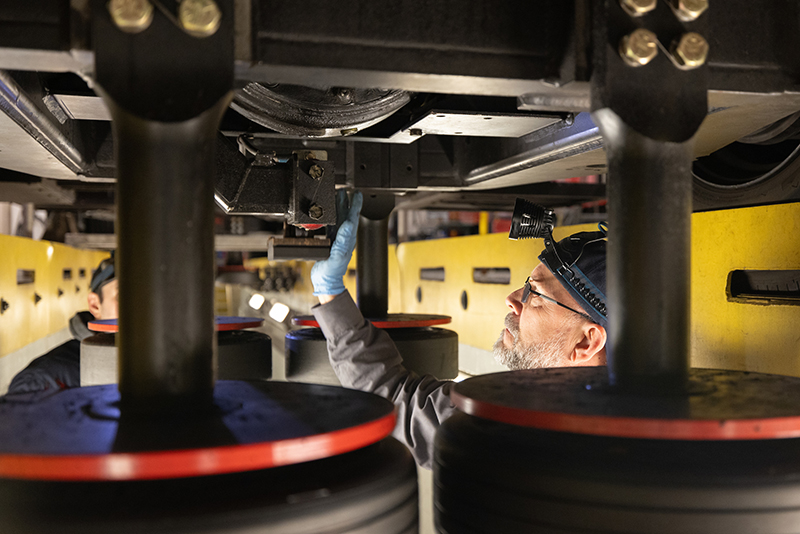
A team effort
Maintaining the SEA Underground requires a team with a specialized skill set trained to work on a wide mix of systems. The aviation maintenance team that keeps the trains running daily is made up of duty maintenance representatives (who specialize in train operation, system recovery, and maintenance), electricians, auto mechanics, and operation engineers. They work on the following systems: air, electrical, electronic, braking, radio, computer, motor control, lighting, communications, automated control, regional automated train protection, automatic train operations, train side and wayside door controls and operation, signs, HVAC systems, and electric motors.
During maintenance weekend the team is supported by electronics technicians, operation engineers, auto mechanics, and electricians from trades across the Port to ensure all trains are inspected without interruption. Airport Communications Center (ACC) operators are also on board to support operations.
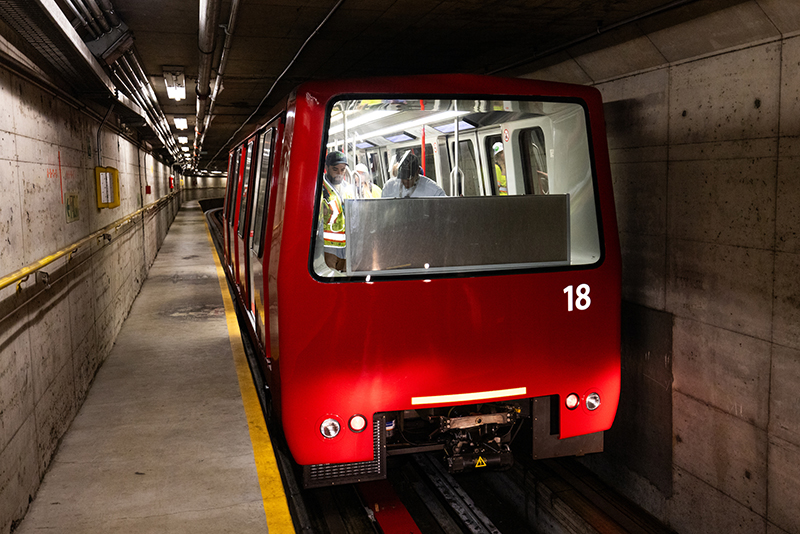
A seamless process
Throughout the weekend, Port staff move train cars seamlessly in and out of the maintenance shop on a transfer table that is largely out of sight. A large door to the shop slides open to allow cars in and out, easy to miss as you whirl through the tunnels. The transfer table consists of a length of track that can be moved from side to side to move cars in and out of the tunnel. SEA currently owns and operates the only two transfer tables in existence in the entire world. Once inside, workers inspect different elements of each car, spending 30 minutes to an hour per car. Every 15,000 miles each car is pulled in for additional preventative maintenance.
To create a smooth experience for passengers riding the trains, the maintenance team takes train cars out of service through a process called uncoupling, which disconnects one car at a time to be moved out of the system for inspection.
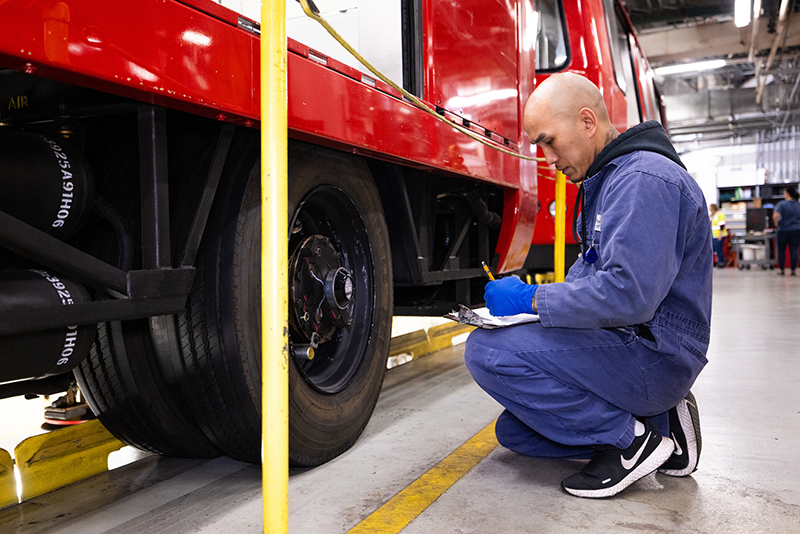
Getting technical
As they take cars out of service, the maintenance team must balance auto programming with pre-programmed safety mechanisms in place and manual overrides to bring the cars into the shop safely. To get the cars in place for inspections, electronics technicians move trains in, out, and through the maintenance shop using controls and system manipulation, drive the trains, and conduct train control communications to the Airport Communications Center via handheld radio.
Once the cars are in the maintenance garage, teams are responsible for the following:
- Operation engineers inspect air systems, HVAC systems, air brake systems, metal components, doors, and associated valves
- Auto mechanics perform overall automotive inspections like checking drivelines and fluids, physical braking system components, wheels and tires, suspension, and guide wheels
- Electricians inspect anything 24V and above, plus lighting, traction motors, control relays, battery chargers, and main propulsion circuitry and components
Any car that does not meet the tight and rigorous standards of the maintenance crew is removed from operation until repairs and reinspection can be performed.

